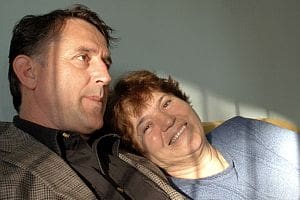statFor some women, it's about making an elegantement at special events or being a couple…

Aging and Posture

As with changes in skin and hair, changes in posture are common with aging. Your bones give your body structure and support, joints attach your bones and allow movement and muscles give you the strength to move your body. Your brain coordinates these and many other body parts that are affected by aging. Over time, older adults might notice changes in the way they, stand, sit or move because of weakness or hindered movement.
What does aging do to your posture?
Older women are especially at risk for a loss of bone density (osteopenia and osteoporosis) due to the inability of the bones to retain enough calcium and other vital nutrients. Gel-like disk that lose fluid over time cushion the bones in the spine. Additionally, the core muscles that help support your frame correctly can weaken, making it more likely that your posture will deteriorate and that your spine will lose it proper curve. These factors can combine to cause a variety of conditions associated with old age, including an abnormal forward rounding of the back called “kyphosis”.
Joints in the body lose their flexibility and lubrication as you age. The cartilage that acts as a pad between your bones wears out and can create a painful rubbing of bone on bone. Minerals may also deposit along your joints as you age, restricting their movement. Both of these factors can contribute to shoulder sagging and hip stiffness.
When you’re young, your muscle mass is at its greatest, and your body is pert and strong. As early as your 30s, the amount of muscle you have begins to decrease. Without the strength and support of adequate muscle mass, you are sure to slump and slouch.
How to prevent poor posture as you age
Exercise is one of the best ways to slow or prevent problems with posture. Getting regular exercise from an early age and continuing your regimen can go far in maintaining your muscle strength, flexibility and balance. Luckily, even beginning an exercise program later in life can help you see some gains in strength and help restore movement in your joints.
Mom always told me to sit up straight
While mom was right that good posture—sitting or standing—is important, good posture alone won’t preserve your spinal health. Sitting or standing up straight is not enough to realign your body. Bad posture is caused by actual changes in your anatomy that can make getting into a proper posture difficult or impossible for many people. This is where chiropractic care can make a difference. Chiropractors seek to fix the root of the problem, which usually involves the spine, by making gradual and permanent adjustments over time that will help you in your quest to regain proper posture.
So what can I do to correct my posture?
Poor posture is not inevitable with age. Additionally, people suffering from postural problems and its side effects can find relief. In addition to helping make spinal adjustments that will help improve your posture, a well-trained and experienced chiropractor can analyze your condition and help you create an action plan for getting you stronger and more active. An appropriate balance of exercises and stretching, in addition to regular chiropractic care can really make a difference!




